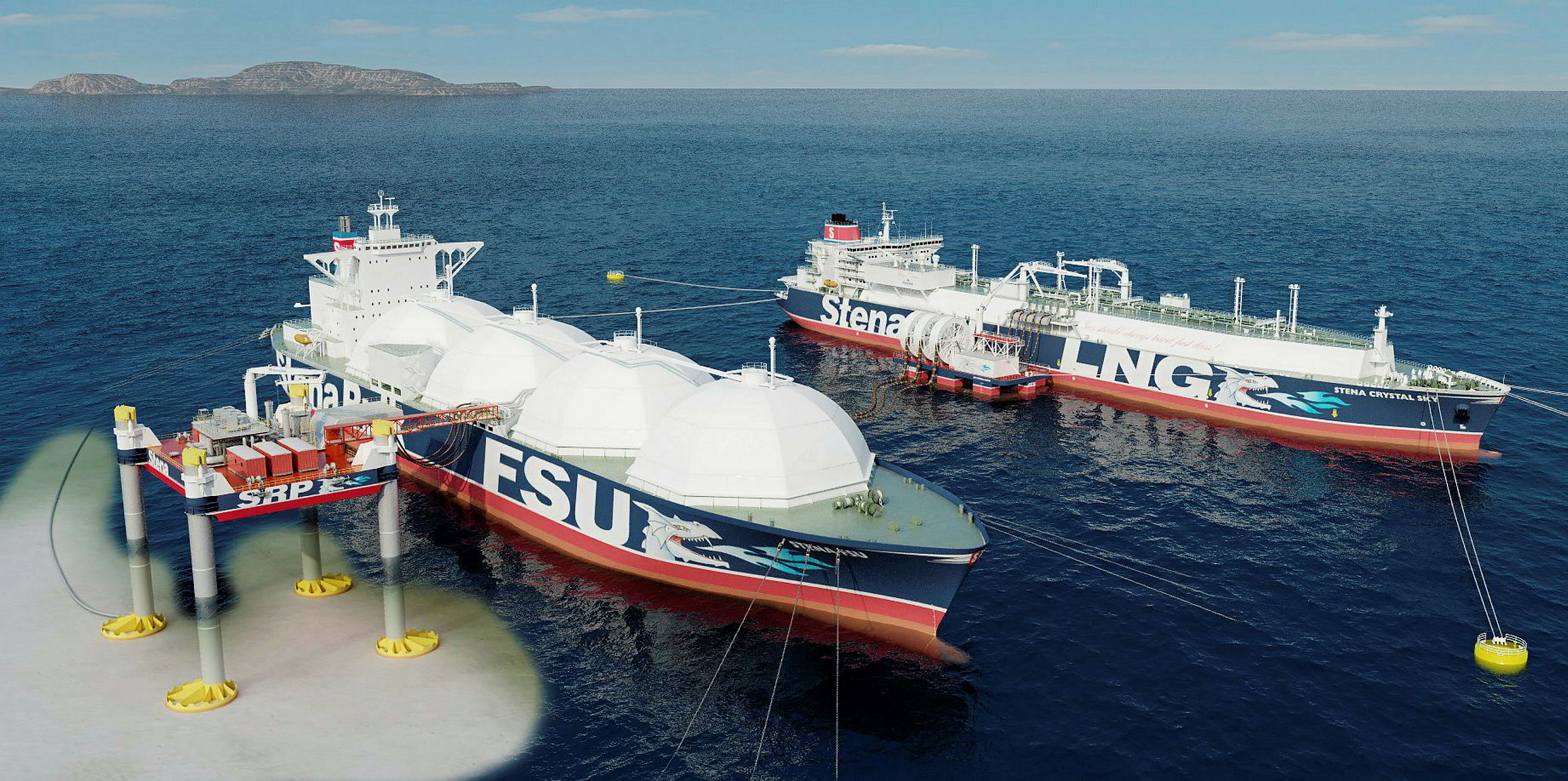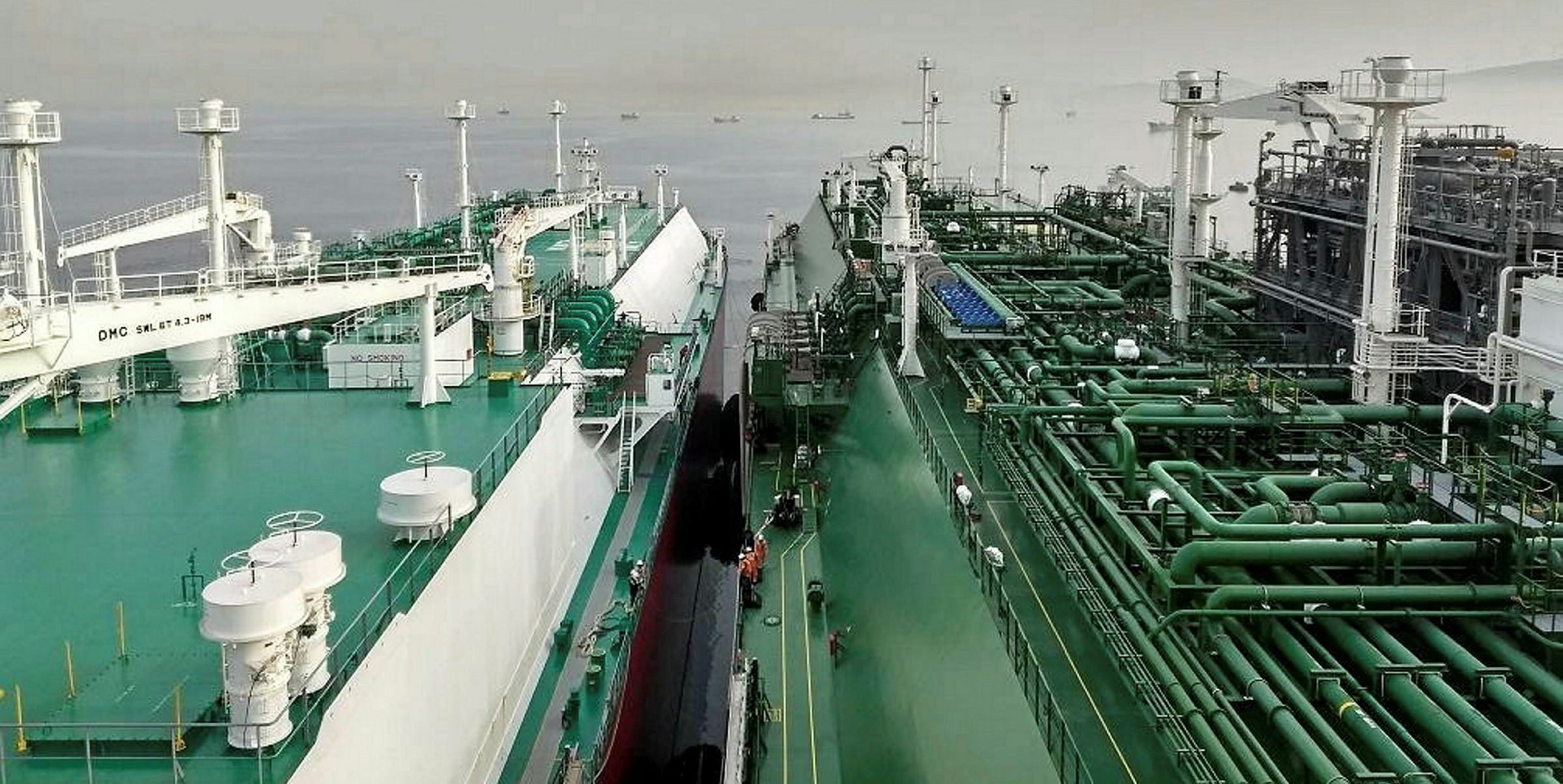Floating storage and regasification units can be expensive, and so can the infrastructure that supports them. So is there a cheaper and simpler way to supply what they provide?
Stena Power & LNG Solutions chief technology officer Svein Hellesmark has been in the Stena sphere for only eight months, but he is excited about the doors it has opened for the concepts he developed under his “baby”, 7 Seas LNG & Power.
Stena bought a 75% stake in 7 Seas in November and the company now sits under its marine service business arm, Northern Marine Group (NMG), operating out of Grimstad, Norway, as Stena Power & LNG Solutions.
NMG managing director Philip Fullerton, who is also a director of the new venture, described it as a young enterprise that sits well with the company’s gas experience and involvement in small-scale LNG and bunkering concept designs.
Hellesmark has come up with three floating solutions — an autonomous transfer system (ATS), a self-installing regas platform (SRP) and a self-installing power plant (SPP).
The driver behind the trio, which he has been working on since 2015, was to create concepts that will allow LNG to be supplied to new markets and the emerging LNG-to-power sector, where jetty-moored alternatives may be too expensive or difficult to build.
The ATS essentially provides the link between a visiting LNG carrier delivering a cargo and the onshore or floating storage.
Potential customers

Heavy mooring chains on the visiting vessel — three forward and aft — mean there is a 150-metre clearance between the visiting vessel and the storage unit.
Hellesmark described the ATS as an enabling technology that makes this set-up possible, avoiding the need for a jetty and cramped ship-to-ship operations. These are often conducted with just five metres between the LNG carrier and a static FSRU — a cargo transfer that requires some skill.
Hellesmark said the ATS can be combined with the SRP to regasify the LNG in a more flexible and low-cost way than a traditional FSRU. The two work well together for projects, he said, adding that there is a great deal of interest from potential customers in this combination.
Proven components
The concept also opens up the possibility of breakbulk cargoes, where the ATS would deliver parcels from moored floating storage to a smaller vessel.
In its third design, the company’s SPP could be used to import, regasify and then send power ashore.
Stena Power & LNG Solutions secured approval in principle for its ATS in May.
Hellesmark said there are no plans to build a prototype, as the design is based on proven components and systems that are already in use.
He said the units could be built in any qualified yard, with 15 to 18 months the typical time to market for the ATS.
The systems would be towed or taken by heavylift vessels to site, where jacking systems would extend legs on the SRP or SPP to raise the platform above the wave action.
As there are no fixed structures, the assets can be relocated, potentially improving commercial payback and giving them small environmental footprints when set against more traditional installations.
Hellesmark and Fullerton were reluctant to give any figures on the likely cost saving for projects, saying that each is unique.
But Hellesmark said the cost of hiring an ATS, an SRP and a floating storage unit would still offer savings.
“The fact that you avoid building a $100m jetty and you also avoid chartering an expensive FSRU enables significant potential cost savings,” he said.
Fullerton was equally reticent on when a first unit might be put into commercial application, but said the technology is gaining appetite in the market, with a number of projects under study globally.
“We are advanced with a lot of our discussions we are having,” he added.








